The Rococo jewel nestled into vineyard terraces that's a visual index of 'a king’s Enlightenment belief in knowledge, cultivation and the civilising power of Nature'
A summer picnic in 1743 prompted Frederick the Great to create a retreat for himself outside his capital at Berlin. The result was the creation of Schloss Sanssouci in Brandenburg, as Aoife Caitríona Lau explains.
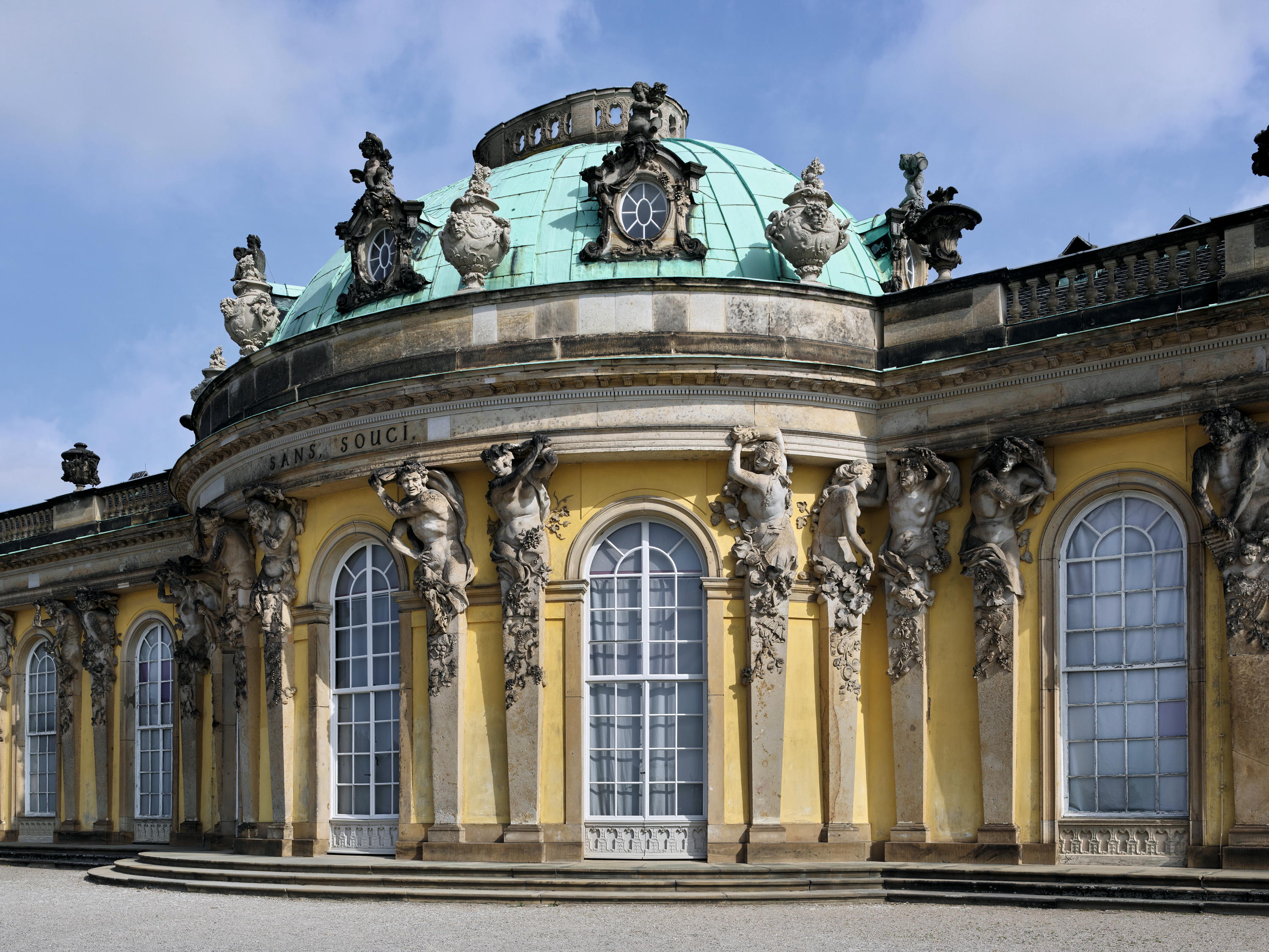
Sanssouci stands in an expansive park on the edge of Potsdam about 20 miles south-west of Berlin. The city itself is inextricably associated with Europe’s 20th-century hostilities. In 1945, the Potsdam Conference determined the division of post-war Europe and the Glienicke Bridge on the outskirts — known as the Bridge of Spies — was used for the exchange of secret agents during the Cold War. Yet previously, Potsdam had been celebrated as the summer retreat of Prussia’s ruling dynasty.
In August 1743, Frederick the Great (1712–86) enjoyed a picnic on a hilltop overlooking the city. He decided that the site would play host to his own bucolic summer residence, a palace where he could exist ‘without a care’ or sans souci. This decision marked the beginning of what would become more than 160 years of Prussian royal — and from 1871 imperial — summer residence. By the time that the German monarchy was abolished in 1918, a total of 17 palaces and gardens would exist in the surrounding landscape.
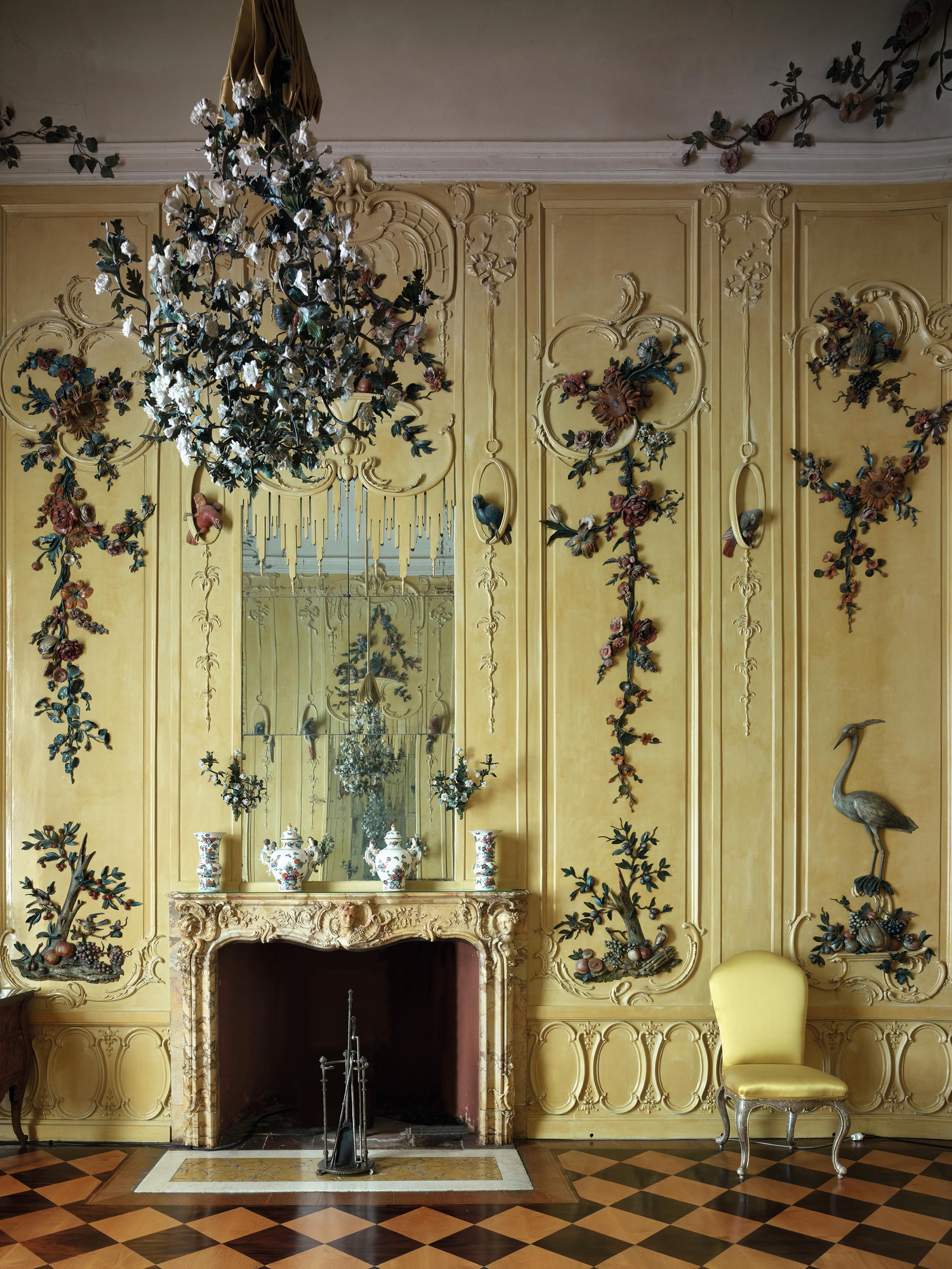
Fig 2: The Voltaire Room. Its chandelier and the carving on its lacquered panelling, from sketches by Frederick the Great, evoke an exotic garden with fruit, flowers and birds.
The King’s intentions were remarkably clear from the first. Inspired by Enlightenment writers, thinkers and theoreticians, he resolved that this would be his ‘château de plaisance’, offering space for lively academic debate and — with Frederick himself being a talented flute player — intimate concerts. The King also wanted a vineyard to be planted on the south-facing side of the hill, to symbolise a harmonious relationship between Man and Nature.
Frederick’s earliest sketch of his palatial arcadia dates to 1744 and is partly rendered as an oblique bird’s-eye view, a projection that is typical of technical military draftsmanship of the period. It recognisably shows the building we see today, with a terraced vineyard and several flights of steps ascending towards what appears to be a long, low-built palace structure. In Frederick’s design, there is to the rear of the palace a spacious, semi-circular colonnaded entrance court, the ‘Ehrenhof’ (Fig 4).
To realise this design, Frederick the Great turned to Georg Wenzeslaus von Knobels-dorff, a distinguished figure in Prussian architectural circles and the mind behind Berlin’s Opera House and St Hedwig’s Cathedral. Yet despite such credentials — and earlier collaboration with Frederick for his castle at Rheinsberg — von Knobelsdorff was largely relegated to the role of draughtsman. The King, ever wilful and convinced of his own artistic vision, dictated much of the design himself, often to the frustration of his architect.
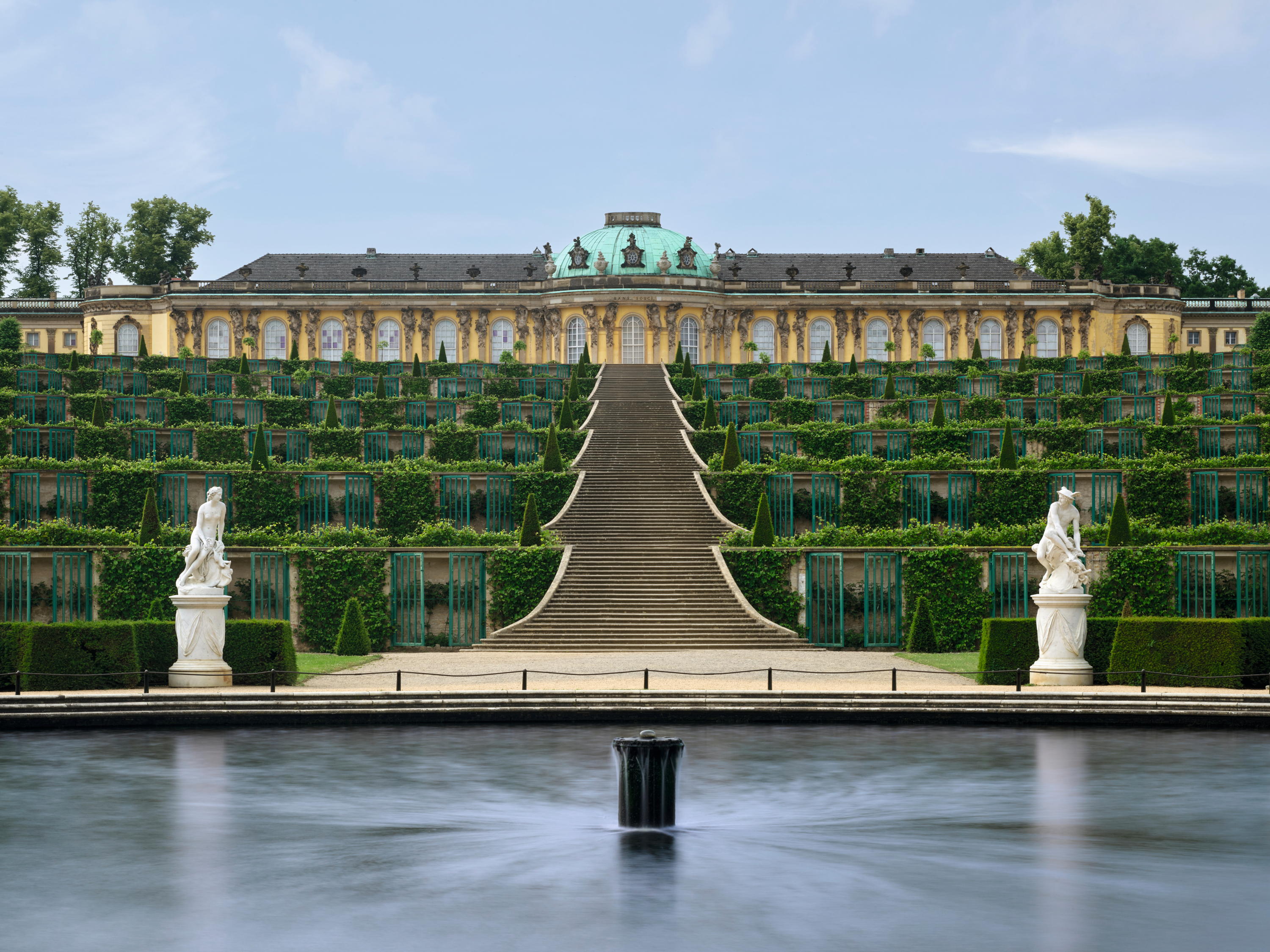
Fig 3: The several terraces are planted with vines and — in the protective glazed cases between the vines — fig trees.
It was not until 1745, almost two years after Frederick the Great’s first visit to the hilltop site at Potsdam during the Second Silesian War, that the foundation stone was laid for the palace. During the campaign, he insisted on receiving regular and detailed updates on the progress of works, going so far as to order that the palace’s project engineers should report to him on the battlefield. Elements of the layout and some interiors have been reconfigured, but the original plan remains clearly legible today.
From the Ehrenhof the visitor enters a large vestibule and, immediately beyond this, the Marble Hall (Fig 7). This spectacular domed interior, as do all the principal rooms of the palace, overlooks the vineyard. To the left of the entering visitor was the royal apartment in the east wing with its sequence of audience chamber, music room, the King’s study and bedchamber and his private library. Running the full length of the wing behind the rooms of the apartment — and connecting back to the vestibule — is a gallery (Fig 5). The corresponding west wing incorporated five guest rooms, with a service corridor to the rear.
Exquisite houses, the beauty of Nature, and how to get the most from your life, straight to your inbox.
Notably absent from this plan is any accommodation for Frederick’s Queen, Elisabeth Christine. Her exclusion from Sanssouci is revealing; Frederick preferred the company of men and relegated her to the distant Schönhausen Palace on the outskirts of Berlin. However, 19th-century modifications to Sansoucci by Friedrich Wilhelm IV included the addition of the Ladies’ Wing to house his wife and her ladies-in-waiting.
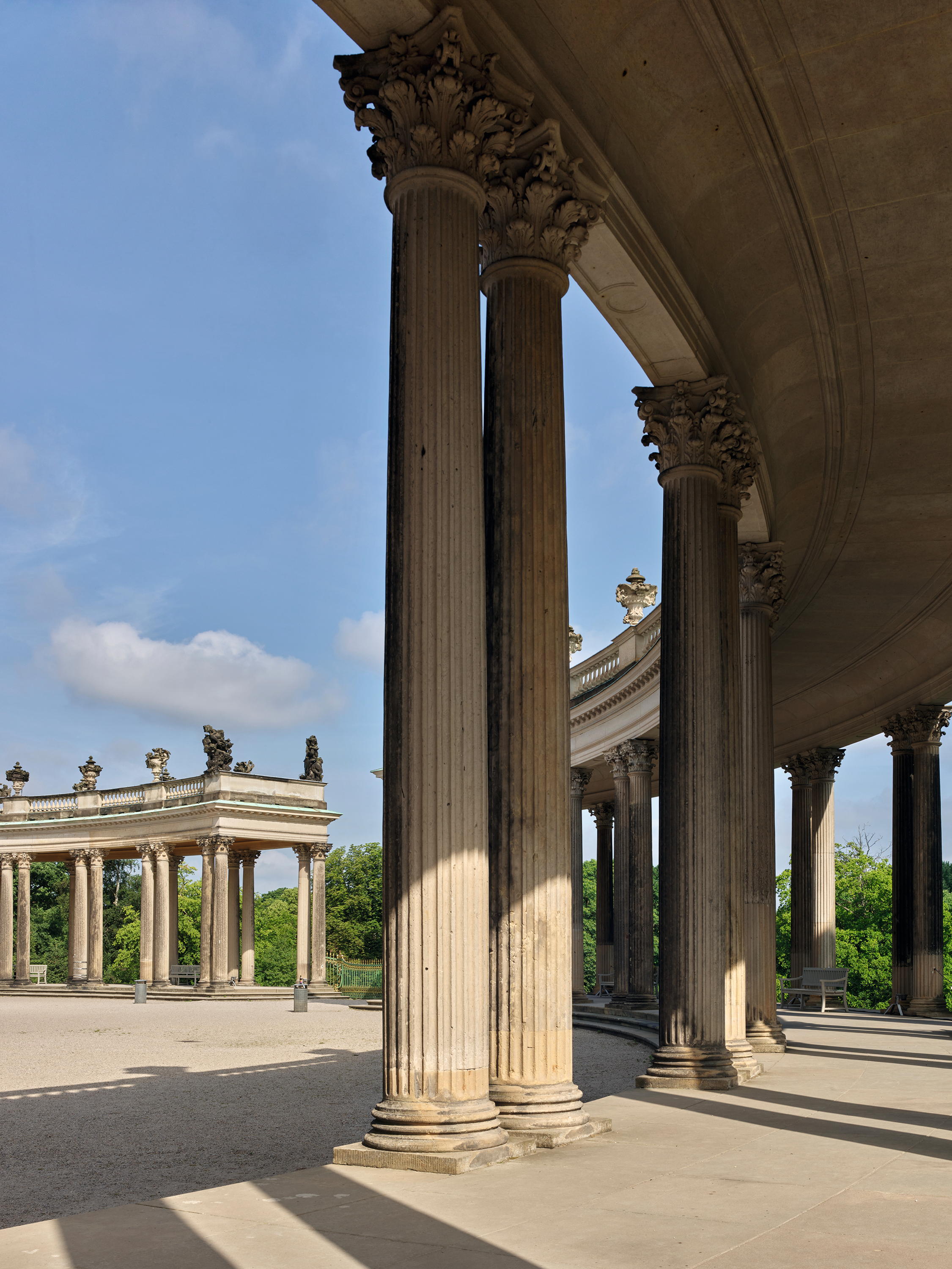
Fig 4: The semi-circular colonnade, known as the Ehrenhof, which forms a forecourt.
Against professional advice, the King insisted that the principal rooms remain at ground level. Rather than enjoy sweeping views towards Potsdam, therefore, they only overlook the broad upper terrace of the vineyard. Without a service basement to elevate the façade, moreover, the palace appears curiously subdued, its silhouette more akin to an elegant orangery than the seat of a monarch (Fig 3). Set back from the main front and further extending the façade are the stable and service ranges, the latter partly screened by ironwork trellises. Gazebos flank the composition.
Animating the vineyard façade of the palace are paired atlantes and caryatids in the form of bacchantes attributed to the workshop of Friedrich Christian Glume (Fig 2). These monumental votaries of Bacchus, god of wine and revelry, not only speak to the product of the terraces they overlook, but the spirit of Sanssouci itself. Their muscular and sinuous forms, carved from local sandstone and larger than life, appear to shoulder the weight of the balustrade above, lending the façade a sense of poised theatricality.
These figures perfectly characterise the flamboyant decorative style of the palace, sometimes termed Frederician Rococo. The fundamental point of reference for this style is the art of the French court of Louis XIV, which was universally acknowledged through imitation — by friends and enemies alike — as the most dazzling in 18th-century Europe. It makes use of the attenuated and asymmetrical C-shaped line so characteristic of the French Rococo and aims at delicacy and lightness. It also, however, incorporates underlying themes and meanings. Frederick was determined, for example, that the palace should provide him with a space to carry out his duties as king. Unlike his rival, Louis XIV of France, who wittily quipped that he was the state — ‘l’État, c’est moi’ — Frederick saw himself as the first servant of Prussia and cast himself in the dual character of a warrior and philosopherking. It’s an idea vividly expressed in the internal decoration of the Marble Hall, a space as theatrical as it is solemn.

Fig 5: A view of the entrance hall and gallery beyond.
Designed by von Knobelsdorff in evocation of the Pantheon in Rome, the Marble Hall is formed as an oval rotunda crowned by a dome that is supported on eight pairs of Corinthian columns in Carrara marble with bronze bases and capitals. Daylight enters from a glazed, central oculus. On the floor, the marble is inlaid with floral motifs in soft green and pale ochre — hues that gently echo the gilded stucco overhead and create a dialogue between floor and ceiling.
Perched on the cornice of the room at its four principal axes are fully modelled figures by master marble sculptor Georg Franz Ebenhech celebrating Architecture, Music, Art (both painting and sculpture) and Astronomy. Each tableau incorporates relevant instruments and behind each is a gilded panel celebrating the same theme. That for Astronomy, for example, bears the image of a nocturnal owl. Rising through the dome in bands, however, are laurel-wreathed military trophies.
The stuccowork of the Marble Hall at Sanssouci was executed between 1745 and 1747 through the collaborative efforts of two accomplished craftsmen, each trained in the sophisticated traditions of southern Europe. Carl Joseph Sartori, originally from Vienna, and Johann Peter Benkert of Neuhaus in Bavaria brought with them the refined techniques of the Habsburg and Bavarian courts, respectively. Their work in the hall, a triumph of gilded ornament and sculptural finesse, so captivated Frederick the Great that Benkert was subsequently entrusted with other commissions of note. These included the elaborate carvings of the Neptune Grotto in the summer palace gardens, various embellishments at the Potsdam City Palace, and the whimsical ensemble of Chinese figures depicted taking tea before the Chinese House further afield in the royal park.
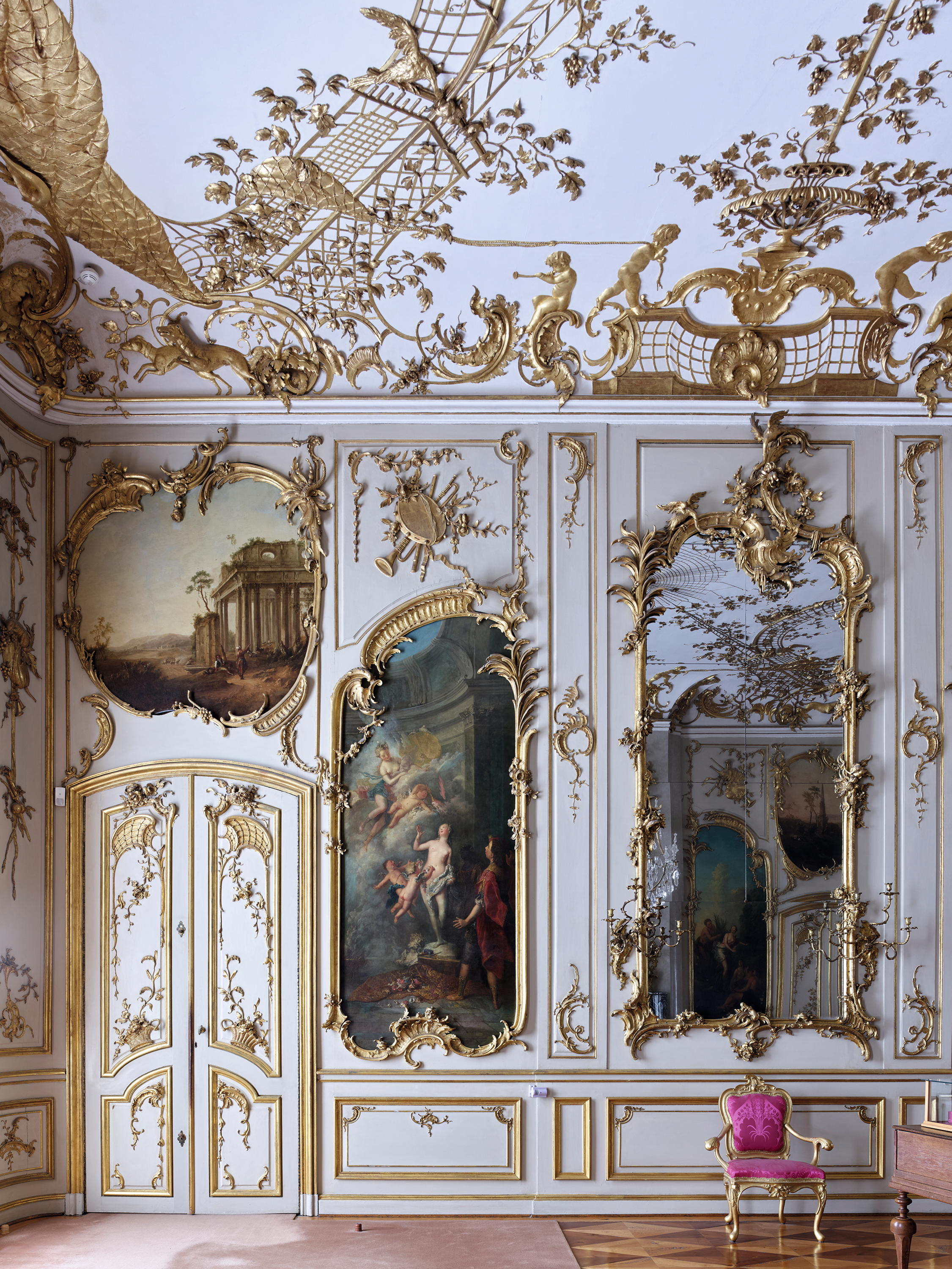
Fig 6: The flamboyant and mirrored interior of the Music Room.
Equally expressive — although of a rather different temperament — is the Music Room. Frederick was an enthusiastic flute player with a particular affinity for adagios (he composed 120 sonatas, many of which began with one). It’s an enthusiasm immortalised in Adolph Menzel’s painting The Flute Concert at Sanssouci of 1852. Menzel depicts the King in this room, seemingly in the act of playing a cadenza. A gathering of friends, family and celebrated court musicians, including Graun, Carl Philipp Emanuel Bach and the flute virtuouso Quantz, look on.
Completed by stuccoist Johann Michael Hoppenhaupt II in 1747, the interior of the Music Room is lined with large paintings of classical subjects and mirrors set in gilded Rococo frames (Fig 6). On the inner wall, the mirrors are inset within gilded trellises and overhung with festoons of flowers. The ceiling echoes this garden theme with the half arch of a fantastical garden trellis hung with vines springing from each corner of the room and linked in the centre by a spider’s web. There are birds, hares being pursued by dogs and capricious putti, too, who frolic through the plaster foliage in scenes of impish delight.
Between 1750 and 1753, Voltaire resided at Sanssouci at Frederick’s invitation and partook in the King’s frequent ‘table talk’ events, which were structured similarly to philosophical salons. Among the most curious and revealing interiors is the Voltaire Room (Fig 1), often cited — albeit inaccurately — as the philosopher’s room. In its present form, the room is decorated with lemon-yellow panelling made of lacquered oak wood that was exuberantly carved and decorated in 1752–53 by Johann Christian Hoppenhaupt, based on sketches by Frederick the Great himself. These carvings incorporate life-size images of storks, bowls of exotic fruit, flower garlands and macaws perched in rings suspended on ribbons. This decoration replaces an earlier scheme of silver floral motifs, a fragment of which survives in the bed alcove.
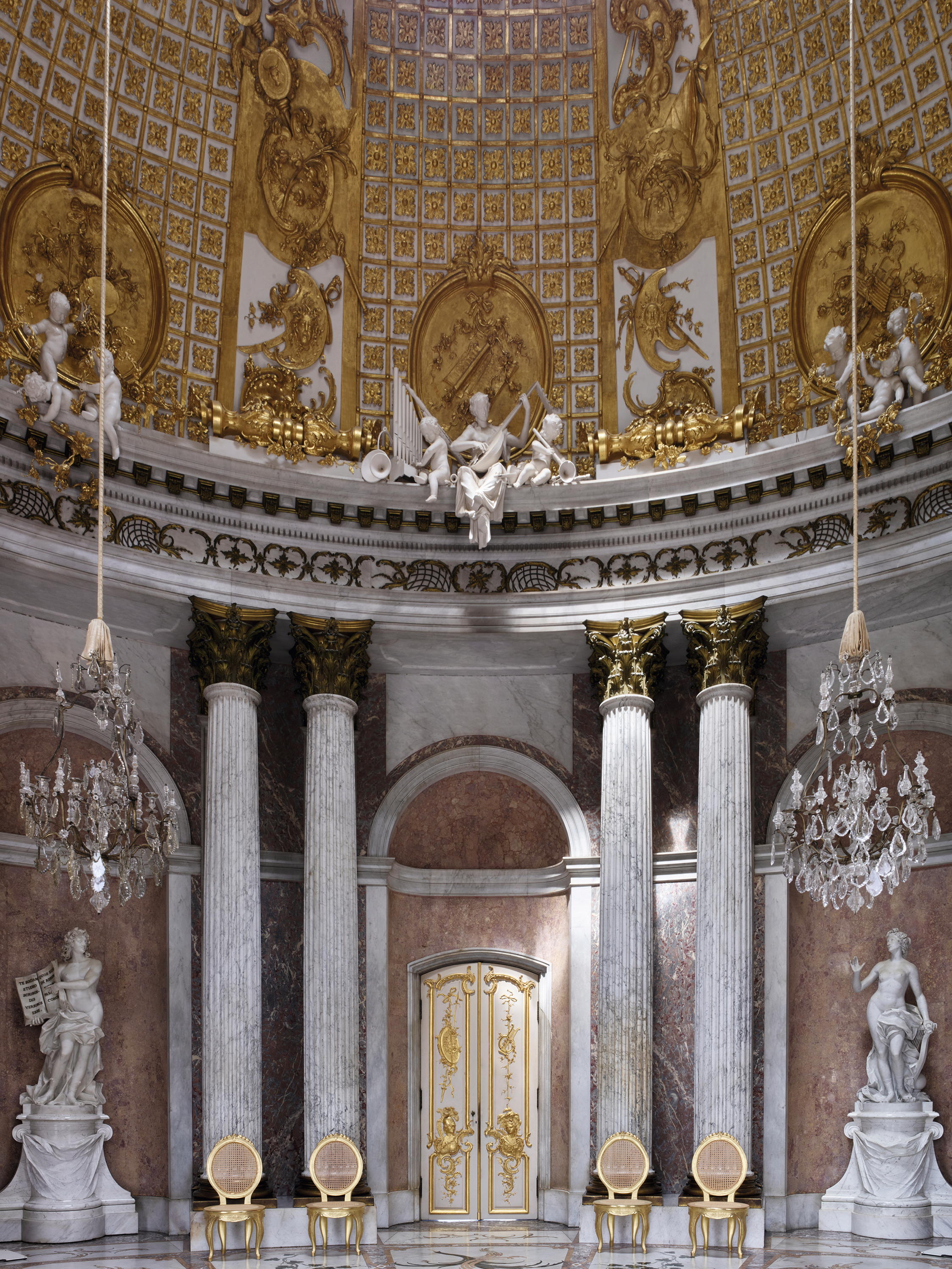
Fig 7: The top-lit domed interior of the Marble Hall. Perched on the cornice are cherubs and life-size personifications of the Arts.
As scholars such as Bärbel Stranka and Rosemarie Heise-Schirdewan have observed, the opulence of the redecoration is both ornamental and autobiographical. Frederick maintained an encyclopaedic interest in horticulture and cultivated the grounds of Sans-souci with a botanist’s fervour. Nearly 700 orange trees adorned Sanssouci’s terraces in summer months and fig trees, vines, and rare fruits, such as pineapples and melons, were carefully nurtured in purpose-built hot-houses. The ornamental fruit of the Voltaire Room thus reflects, quite literally, the fruits of royal labour — a visual index of the King’s Enlightenment belief in knowledge, cultivation and the civilising power of Nature.
Sanssouci remains Frederick the Great’s most intimate architectural legacy — a low-built Rococo jewel nestled into vineyard terraces, opening south onto expansive, geometrically ordered gardens. The vast park, structured by the central Hauptallee, offers both Enlightenment clarity and romantic reverie. To the north, the palace gazes toward a distant hill crowned with a Roman-style ruin — a deliberately staged folly, evoking time, decay and reflection. Frederick’s wish to be buried here, on the uppermost terrace among the vines, speaks volumes. Denied in his lifetime, it was finally honoured in 1991. Now, his grave rests quietly above the palace, as he had imagined: within sight of his garden world, at peace and sans souci.
See the Sanssouci website for more information and visiting details.
Aoife Caitríona Lau is an academic, author and lecturer at Oxford University.